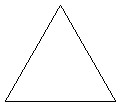Find the potential function f for the field F.F =  i +
i +  j -
j -  k
k
A. f(x, y, z) =  + C
+ C
B. f(x, y, z) =  + C
+ C
C. f(x, y, z) =  + C
+ C
D. f(x, y, z) =  + ln z + C
+ ln z + C
Answer: B
You might also like to view...
Find the absolute maxima and minima of the function on the given domain. on the square
on the square 
A. Absolute maximum: 12 at  and
and  absolute minimum: 0 at
absolute minimum: 0 at 
B. Absolute maximum: 4 at  and
and  absolute minimum: 0 at
absolute minimum: 0 at 
C. Absolute maximum: 12 at  and
and  absolute minimum: 4 at
absolute minimum: 4 at  and
and 
D. Absolute maximum: 4 at  and
and  absolute minimum: 3 at
absolute minimum: 3 at 

 and
and 
Solve the problem.The tooth geometry for a particular saw blade is modeled by the following functional relationship between the tooth height, f(x), relative to an imaginary flat edge, and the distance, x, along that reference edge:
 Find ao, three nonzero cosine terms (if they exist), and three nonzero sine terms (if they exist) of the Fourier series for this geometrical definition.
Find ao, three nonzero cosine terms (if they exist), and three nonzero sine terms (if they exist) of the Fourier series for this geometrical definition.
A. f(x) = 1 - 

B. f(x) = 1 + 

C. f(x) = 1 + 

D. f(x) = 1 - 

Translate the problem to a system of equations, then solve using Cramer's Rule.Jerry has 3 pieces of string. The total length is 82 inches. The sum of the two longer pieces is 70. The middle piece is twice as long as the shortest piece. What are the lengths of the 3 pieces?
A. 6, 12, and 64 inches B. 12, 24, and 46 inches C. 12, 46, and 56 inches D. No solution
Find the sum of the angle measures for the given regular polygon.
A. 360° B. 180° C. 1080° D. 720°